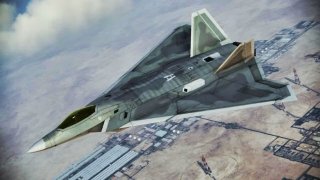Project Mayhem: Could the U.S. Air Force Build a Mach 10 Hypersonic Bomber?
There is also speculation that the United States Air Force's not-so-top-secret SR-72 could serve as a testbed for the engines that will power the Project Mayhem aircraft.
The first rule of reporting on secret aircraft is that we can (and will) write about Project Mayhem – and if you don't get that nearly 25-year-old reference, you really need to see Fight Club. What we know about this particular Project Mayhem is the United States Air Force's secret hypersonic program to develop could be an air-breathing Mach 10 replacement for the long-retired SR-71 "Blackbird" in bomber form.
It was in January 2023 that engineering innovation firm Draper joined a team led by Leidos, and was awarded a $334 million contract to assist the U.S. Air Force Research Laboratory (AFRL) in developing an air-breathing hypersonic system.
The Expendable Hypersonic Multi-mission ISR (intelligence, surveillance, and reconnaissance) and Strike program is expected to span more than four years, where Leidos will serve as the System Design Agent (SDA), and oversee the designs, prototypes and tests of the system. Major components of the Project Mayhem vehicle will include an airframe, booster, propulsion system, avionics, and vehicle subsystems.
The initial task order of $24 million will mature the program to the System Requirements Review (SRR) and Conceptual Design Review (CoDR) in a fully Digital Engineering (DE) environment.
Project Mayhem: Speed Demon
An ultra-high-speed aircraft isn't entirely a new concept.
As Popular Mechanics reported last year, the idea of a hypersonic plane dates back to the Space Race, culminating in the North American X-15A-2 record-breaking Mach 6.7 flight in 1967 – while further aerospace advancements resulted in the supersonic SR-71.
It is expected that Project Mayhem would likely employ a multi-cycle propulsion system, and utilize a jet engine to reach Mach 3 before transitioning to an air-breathing scramjet for hypersonic speeds.
What Else Do We Know?
We know that Project Mayhem exists, but details on it remain so sparse that perhaps someone in the program had watched the aforementioned 25-year-old film and was reminded that the first rule of Fight Club is that you don't talk about Fight Club. Then again, those with Top Secret level security clearance already know to be tight-lipped.
As a result, what we believe to be true – which may not be the same as the actual truth about the future bomber – is that it could travel at about 7,000 mph or 10 times the speed of sound. It will be powered by the "air-breathing" propulsion system, also known as a scramjet, which can compress air to a flammable pressure.
The aircraft is also expected to be unmanned.
There is also speculation that the United States Air Force's not-so-top-secret SR-72 could serve as a testbed for the engines that will power the Project Mayhem aircraft. Yet, the two projects are believed still quite separate and distinct (unlike Tyler Durdan and the narrator in Fight Club). The SR-72 could also be a reconnaissance aircraft, while Project Mayhem is very much a future bomber – at least we think so.
As Brandon J. Weichert recently wrote for The National Interest, "Project Mayhem, like the SR-72, is believed to travel at or around Mach 6. But it could carry a greater number of weapons. What's more, the hypersonic payload it can deploy will outstrip the firepower of any existing platform. The advantage that a hypersonic bomber would have over other bombers is that the hypersonic platform could deliver conventional bombs more effectively over a target protected by advanced air defense networks. An ordinary bomber would likely be stymied by this complication."
The core theory is that an aptly-named Project Mayhem hypersonic bomber could quickly beyond an adversary's air defenses, drop the bombs on target, and then be back on its way home before enemy interceptors have time to react. How far along the project is, when the aircraft may take its first flight, or even where it is being developed remains unknown. But based on the contracts, we can at least assume it is real and not a figment of someone's imagination.
Author Experience and Expertise: Peter Suciu
Peter Suciu is a Michigan-based writer. He has contributed to more than four dozen magazines, newspapers, and websites with over 3,200 published pieces over a twenty-year career in journalism. He regularly writes about military hardware, firearms history, cybersecurity, politics, and international affairs. Peter is also a Contributing Writer for Forbes and Clearance Jobs. You can follow him on Twitter: @PeterSuciu.
You can email the author or contact us: [email protected].


